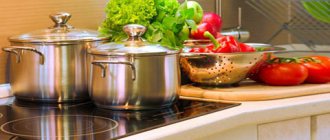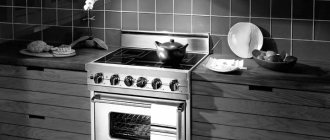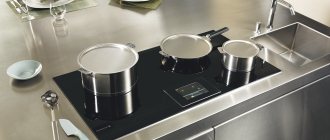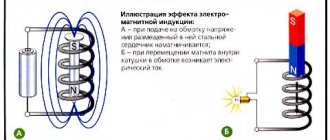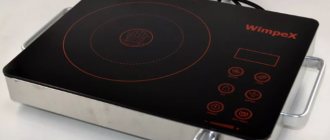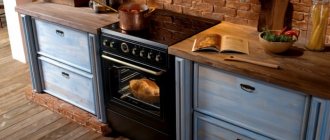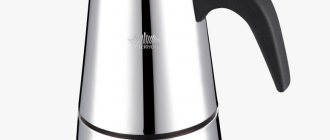Glass ceramics and tempered glass, which are used to make hobs, are one of the most important elements of any modern kitchen, because not only the level of comfort of the entire room, but also the quality of the prepared food will depend on it. It should perform the functions assigned to it and be convenient for everyday use.
Rationality regarding the space used will also play an important role. Traditional slabs are not taken into account. The modern market is able to offer a huge number of different hobs. They will differ from each other in the material used, functional features and design. Each of the materials has both its disadvantages and obvious advantages.
Making the final choice in favor of glass ceramics or tempered glass is quite difficult. Both of these materials are characterized as aesthetic, easy-to-use, environmentally friendly, wear-resistant and have a long service life. The difference will lie in minor details that should be taken into account when choosing the device model you like.
However, based on practical considerations, these nuances should be paid attention to first of all, because the stove must be quite functional.
Hob selection criteria
Without exception, all hobs can be divided into several main types: independent and dependent. The second type operates in conjunction with an oven. They will have a common control panel, so they will not be able to work separately from each other.
Dependent hob and oven system
The dependent surface is a modern analogue of a kitchen stove, but with broad functional features and is more compact. The dependent type of surfaces is a number of models that can be installed anywhere, which will significantly save a small amount of kitchen space.
It is also worth paying attention to the fact that the niche in which the oven was previously located can be used when using an independent hob to create an additional drawer or to install any other device and large-scale kitchen utensils. However, safety precautions should not be neglected.
Independent hob
Dependent models will cost the owner slightly less than independent type devices, where the cabinet and panel will be located separately from each other.
In the dependent model, if the oven breaks down, using the hob will become impossible.
Heating zones are subject to preliminary calculation, since their number is an important point when comparing different models. Here it is worth considering the number of family members, their requirements and wishes. Four burners of different sizes are considered standard, but their power will also differ.
The standard number of burners on the stove is four
The type of surface will play an important role. So, it can be made of enamel, glass ceramics, tempered glass, stainless steel. Glass ceramics and tempered glass are considered to be among the most attractive. It is possible to use various variations based on the “gas under glass” principle.
Rating of built-in gas hobs
The abundance of models complicates the choice, so when deciding to become the owner of such a device, it would be a good idea to familiarize yourself with customer reviews and the rating of the best samples, according to experts and users.
Built-in gas hob with 2 burners
Hansa BHGI32100020
A model that is the most budget option among the best in the rating. One of the features is the ability to connect an external cylinder in the absence of a main gas supply. The advantages of the model are compactness, the presence of electric ignition, convenient power adjustment and reasonable cost, which is 6,500 rubles.
Price: ₽ 6,300
Gorenje GC 341 UC
The model that tops the ratings. The built-in hob Combustion is a masterpiece in its class. The platform is made of polished glass ceramics, the grate is cast iron, there are additional functions (gas control, automatic ignition), the kit includes special nozzles for converting the stove to liquefied gas (if necessary). Among the advantages, we can additionally note the quality of workmanship and stylish design. The main disadvantage is the price, which is 14,000 rubles.
Price: RUB 14,129
Built-in gas 4-burner hob
Asko HG1666SB
A model that is the undoubted leader, but at the same time boasts its considerable price, which is 45,000 rubles. Despite the use of stainless steel, the patented Poliant coating ensures reliability and practicality during use. One of the burners has a double circuit with a WOK grate, which is removable. The advantages of the stove are the build quality, a complete set of burners, in terms of versatility, and rich functionality. Among the shortcomings, users highlight only the high price.
Price: ₽ 44,900
Built-in 5-burner gas hob
Hotpoint-Ariston 750 PCT
Built-in gas hob from Ariston, which, although it does not occupy the leading position in the rating, has an ideal price-quality ratio. The device is offered in stores at a cost of 16,000 rubles. For this money, the buyer receives enameled steel, a cast iron grate, and additional functions in the form of electric ignition and gas control. Even with 5 burners, the panel has compact dimensions (width - 75 cm, depth - 51 cm).
Price: RUB 15,894
Built-in 3-burner gas hobs
Bosch PCC615B90E
The leader in the rating, offering the user three burners, one of which has increased power with a WOK-shaped triple crown. The gratings are made of cast iron, the panel itself is stainless steel. There is electric ignition, protection against gas leaks, and a special FlameSelect function allows for 9-step flame adjustment. One of the disadvantages is the short power cord. The cost of the model is 19,100 rubles.
Price: ₽ 19,000
Gefest CH 2120
An attention-grabbing panel with an unusual shape that will appeal to fans of the original, but will not save space, since due to its triangular shape it measures 73 cm in width and 50 cm in depth. There is gas control, electric ignition built into the switches, the ability fix a small flame. Among the advantages are individual grates for each burner and a 2-year warranty from the manufacturer. The cost is 11,000 rubles.
Price: ₽ 10,800
Production of tempered glass and glass ceramics
The technological features of the manufacture of tempered glass are such that the material is significantly heated, which is then sharply cooled, eliminating the possibility of crystallization. The result is an incredibly durable outer layer. The structure inside will remain viscous.
Manufacturing of tempered glass
Thanks to the hardening process, the material becomes resistant to various mechanical and thermal influences. In the presence of significant point loads, the glass will crumble into small fragments, which will not allow the structure to be assembled together. However, such properties make the material incredibly safe, since when destroyed, only cubic fragments are formed, which cannot be injured.
Broken tempered glass
For the manufacture of glass ceramics, it is customary to use composite substances, which will include glass and clay. A single mass is made from raw materials using high temperatures. Further “extreme” cooling is not used, which makes the product completely heat-resistant (several times higher than tempered glass).
The production principle of the material is similar, but each case will have its own shortcomings and advantages.
Glass ceramics or tempered glass - which is stronger?
customary to use tempered glass in electrical panels , and there is a logical explanation for this. It lies in the fact that the maximum permissible heating temperature of such a material is significantly lower than the indicator to which the slab material will be heated during its operation. Even electric burners can get very hot.
Tempered glass hobs are almost always gas-only
Compared to tempered glass, glass-ceramics can withstand twice as much as the previous one. So the range can reach up to 750°C. This is one of the main advantages of using this material. However, in combination with gas stoves, this advantage is lost, since during operation it is not the ceramics or glass that will heat up, but the burner itself. It will be located above the surface of the material, so any of the above materials will be able to withstand the operating temperature.
Their mechanical strength indicators are very close, however, glass ceramics are slightly ahead of tempered glass. In this case, unlike tempered glass, ceramics will break into regular sharp pieces. Tempered glass if damaged significantly will become cracked (like on a car windshield).
Broken glass ceramic hob
Gas stove with glass-ceramic surface: how to choose, TOP best models
Gas stoves with glass-ceramic surfaces are rapidly approaching the top of the ratings of kitchen cooking appliances. Such panels are ergonomic, they give the appearance of the kitchen a special sophistication.
New technological processes make it possible to obtain high-class glass ceramics; its use is not limited to the surface of the stove. This material is often used to decorate counters, tabletops, and bar counter interiors. If the surface resembles glass in appearance, then in terms of mechanical qualities it is not much inferior to metal products.
Features of glass-ceramic plates
Many consumers are in awe of gas stoves with glass-ceramic surfaces; their operating principle seems like magic.
In fact, the basis of operation is the same: the heating element serves to transfer thermal energy. The impact of thermal radiation occurs purposefully in a given direction.
In addition to the burner area, it is safe to touch any place on the stove when it is turned on. The area under the burners cools down quickly.
List of characteristic features of ceramic slabs:
- This innovative stove gives off heat predominantly in the vertical direction. This increases the efficiency of the device.
- The inertia of glass ceramics is small, so the device cools down quickly. After turning off the burner, you can almost immediately touch the heating zone. This effect does not exist in devices of other designs.
- An undoubted advantage is the adjustable heating zone. This effect is possible thanks to a perfectly flat cooking surface. The burner is capable of heating dishes of different diameters; in this case, electricity is consumed in the most economical mode.
- The shape of the burner itself may change. This makes it easier to cook food in an oval bowl; it can be moved from place to place on the surface of the stove.
- The appearance of glass ceramics adds nobility and modernity to the kitchen. The matte surface harmonizes well with most design solutions.
- Attractive automatic boiling function. At the beginning of cooking, a small heating power is selected and the automatic mode is activated. Further, the working process proceeds at maximum heat transfer. After complete warming up, the system returns the power level to its original value. This option can be automatic, but manual programming is also possible.
All these features radically distinguish glass-ceramic hobs for the better when compared with gas analogues.
Advantages and disadvantages
Let’s try to objectively evaluate the positives and negatives when using such equipment.
pros
In terms of performance, the glass-ceramic hob occupies a leading position. Its advantages include:
- Instant heating option available. It takes a few seconds to warm up the panel itself, and the same amount to heat the dishes;
- Low energy consumption makes such a stove an effective tool in the fight to save the family budget. During its operation there are no irrational losses, while an electric stove requires about 10 minutes to warm up;
- high mechanical strength of the panel. Employees of the Polish company Hansa demonstrated tests in which a two-kilogram pan fell onto the surface of the stove. Glass ceramics passed the tests with honor;
- the surface is resistant to elevated temperatures;
- advanced functionality. If in standard gas appliances basic cooking comes to the fore, then glass ceramics makes this process also comfortable. To do this, use a timer, a shut-off function when boiling, and the ability to auto-cook. The housewife's work is made easier and requires only partial participation in the process;
- the burners do not deteriorate, and there are simply no grates. When using a gas stove, these two positions must be replaced from time to time;
- the flat and even surface of the stove does not create difficulties when washing;
- stove design in modern style, perfect coating, reflecting the sun's rays - what better way to decorate the kitchen interior. Although most panels are produced in black, you can also find a white surface with dark burner circles;
- A big plus for these stoves is the ability to use any cookware, unlike induction devices that require special equipment. The main thing is that the bottom of the dish is level;
- You cannot ignore the increased security measures. Thanks to the use of polarized thermal conductivity, you can safely place your hand at a distance of 2 centimeters from the heating sphere. Child lock prevents the younger generation from accessing the device.
In addition to obvious advantages, glass-ceramic stoves are characterized by disadvantages, which include:
- special conditions of care. The surface must be cleaned using a special tool. For cleaning, special household chemicals are used, the cost of which is quite high;
- glass ceramics do not tolerate the effects of sugar in any form - both pure and in the form of syrup, jam, etc. If the sugar composition burns on the stove, it is almost impossible to clean such a stain;
- Temperature changes are contraindicated for the panel material. When operating the stove in heating mode, it is advisable to exclude the possibility of cold liquid getting onto the surface. The device will withstand repetitions of several similar situations, but if this happens regularly, the panel will fail;
- A perfectly flat surface, in addition to a number of advantages, has one significant drawback. If the broth escapes during cooking, it will end up on the floor. Grease stains will remain not only on the work surface, but also on the covering around the floor;
- The glass-ceramic surface is sensitive to point impact, chips or microcracks form;
- the cost of such devices still exceeds the cost of gas and electric stoves.
To summarize, it can be noted that the whole negative of glass ceramics lies in the complexity of operation and complex maintenance. But ease of use makes these shortcomings hardly noticeable.
Decent choice
Considering the variety of models with glass-ceramic coating, choosing the right one is not easy. The most advanced models are comparable in price to a used car, but you can choose an inexpensive device with a small set of functions.
The depth of models intended for arrangement in furniture sets is 50 cm. In standard slabs it is 10 cm greater. The width of the slab also varies in two figures - 50 or 60 centimeters.
There are interesting combined specimens. They have 4 gas burners combined with two electric ones. The width of such a device is 90 centimeters.
There are models on the market with manual mechanical adjustment, but such control requires additional care. Glass-ceramic panels with touch controls are very popular; in this case, the aesthetics of the stove benefit and the adjustment is smoother. True, the cost of the device itself also increases.
The level of residual heat is a function unique to this type of heating device. You can clearly see how much heat remains in the burner. This helps to rationally manage energy consumption.
If you urgently need to increase the power of one burner, you can use the power transfer option (booster). Very convenient for quickly boiling water.
Pros and cons of glass ceramics
In order to purchase a glass-ceramic hob, you will need significant expenses, but such an acquisition will have many advantages. The main ones include the incredible durability of the material. Thus, a load of up to 25 kg per centimeter of surface is allowed. However, there is one caveat. Aluminum cookware is prohibited, as practically irremovable stains will begin to appear in the process. The cookware used must have a thick bottom without any defects.
Glass ceramic hob
However, the heating area allows you to use dishes of a wide variety of sizes. Only the burners located in the thickness of the glass will heat up, but other areas will remain cold and can be safely touched. You should not sprinkle sugar on such a surface, as this will affect the initial characteristics of the equipment.
| Advantages | Flaws |
| Thermal stability | High price |
| The material is not afraid of significant temperature changes | Small selection of domestic models |
| Unrivaled appearance | Surface is easy to scratch (minor scratches) |
| Amazing thermal stability | Single-point mechanical impact is contraindicated |
| Resistance to mechanical damage |
Glass ceramic hob: pros and cons
Review of the pros and cons of glass-ceramic hobs
The appearance of glass-ceramic panels in our kitchens has a very interesting backstory: it turns out that initially a new material called Zeradure was planned to be used for the manufacture of telescopes. This was in the last quarter of the last century. The idea that it would be perfect for household needs arose a little later. This is how the glass-ceramic hob appeared, the pros and cons of which we will consider in our review.
Glass-ceramic hob: pros and cons in the original material itself
Of course, having reached the concept of using the former telescopic source for kitchen appliances, the material has undergone significant changes. But the essence remains the same: the basis of any glass-ceramics is glass-ceramics and astro-ceramics - in simple terms, glass-crystalline structures that have a whole range of unique properties.
The advantages and disadvantages of these types of materials are laid down at the stage of birth of the future panel, or rather, its surface:
- In a glass melting furnace, “green” glass is cast, which does not yet differ in any way from ordinary glass. Among the manufacturing suppliers are Schott Glass and Eurokera (France).
- Next comes the personalization process. The glass is cut to a given shape (it will be different for each model). Here the edges are processed and decor is applied. So, here is the first advantage - originality and unique design from each manufacturer (Hansa paints the signs of the Zodiac, and Zigmund & Schtain even presents frescoes). In fact, the decor penetrates the glass at the diffusion level, which means it is impossible to remove it later. Here is the second plus - the coating cannot be removed (and maybe a minus if we are talking about manufacturer errors, but this does not concern customers).
- And here is the main point - ceramicization. This is where secret ingredients from each manufacturer (special crystals) are added. They give the glass low expansion when heated.
All these physical and technological aspects are given for a reason - they are reflected in the “talents” and skills of the panel.
Glass-ceramic hob: advantages in general terms
Equipment manufactured in accordance with all the rules will be capable of the following feats:
- Such a panel can withstand heating up to 600°C, and it can do this in a matter of seconds.
- She is not afraid of sudden changes in temperature (you can place ice on a heated burner and not see any harm in it).
- The special heat conductivity also deserves attention. Glass ceramics conduct it perfectly across the surface and very poorly along the surface. This is very good for those preparing food - in case of accidental contact with the stove it will be impossible to get burned.
- Despite its apparent fragility, such a panel is capable of withstanding a fairly noticeable static load, that is, it has a good margin of safety.
- There is a controversial issue about impact loads - even though in laboratory conditions they drop pots from a height of half a meter, such a unit must fall perfectly parallel in order to get the desired result. Real life is not a laboratory; here no one is safe from the fact that the dishes will fall on their edges (and, in any case, they will tilt in one direction or another).
Cons of a glass-ceramic hob
It is better not to hang kitchen utensils such as frying pans, knives, etc. above such a panel. If they fall on glass ceramics, hitting, of course, an edge, the result can be very sad.
The disadvantages of a glass-ceramic hob are that it does not like sugar, plastic and aluminum. It cannot be cleaned with steel wool, a brush or a knife. It is also not recommended to use abrasives.
Special means for washing such surfaces are also expensive. Of course, the consumption is small, but you will have to buy it in any case - this way the glass ceramics can be maintained in well-groomed condition. Plus, the products will leave a special film that will help protect the panel if a liquid with a high sugar content accidentally spills there.
Yes, yes, sugar is dangerous for glass ceramics even if it does not fall on it in a free-flowing state. If it is not wiped off immediately, it will leave unpleasant whitish marks. Of course, it will be possible to use the equipment in this case, but the appearance will not return to its previous ideal state.
Pros and cons of tempered glass
The principle of manufacturing this material is simple, but it is thanks to it that glass becomes incredibly durable. The maximum possible heating of the material is carried out, after which it is subjected to extreme cooling. This is precisely why it is almost impossible to break or damage it with any object other than metal. And it is precisely because of this that it has become so popular and is used not only for hobs, but also in the installation of double-glazed windows and partitions.
Tempered glass hob
There is no need to remove the burners to clean the surface. It is enough to walk over the surface with a dry towel (wet cleaning will be a little more problematic, since stains may remain). It will be difficult to get burns, since the glass will not heat up during the cooking process. The cost of such products is more than affordable, and in terms of quality they are in no way inferior to their ceramic counterparts.
| Advantages | Flaws |
| The material is incredibly durable and resistant to mechanical damage | This surface cannot be cut or drilled. |
| Excellent flexibility | The edges may develop chips over time. |
| Thermal resistance | Difficulty cleaning (stains) |
Glass ceramic hob: pros and cons
The glass ceramic hob burners heat up to +750°C. Heating occurs vertically only under the cookware area.
Advantages:
- Strength of the material. Withstands weight up to 20-25 kg.
- Heat resistance. Tolerates high temperatures.
- Aesthetics Fits into any kitchen style. The transparent material was developed for the glass of astronomical telescopes and has found application in various areas of life.
- Safety. It heats up only under the container, which is on the panel.
- Convenience. The burners are equipped with indicators. Red color indicates that the burner is on. After cooling, the panel becomes monochromatic.
- Versatility. Manufacturers make burners on panels of different diameters. But there is no need to specifically buy dishes of the same size, since vertical heating occurs exactly at the place where the container is located.
- Economical. Fast heating saves energy. Slow cooling is convenient during the cooking process - the dish arrives with the remaining heat and remains hot for a long time.
Flaws:
- High price.
- Scratches remain when using cookware with an uneven bottom. The use of aluminum containers is excluded.
- Fragile. Withstands heavy statistical loads. But when sharp, heavy objects fall on the panel, the coating cracks. Further operation is not possible.
- Requires careful and competent care and the use of expensive cleaning products.
Hob: glass ceramic or tempered glass
Choosing a ceramic or tempered glass hob is not easy. Both materials have similar positive qualities:
- environmentally friendly;
- convenient, easy to use;
- wear-resistant;
- have a long service life of glass.
The production technology of glass ceramics and tempered glass is largely the same. The principle of manufacturing hardened material is strong heating and subsequent rapid cooling. This eliminates the possibility of glass crystallization. The original product has a durable outer layer. Inside, the microstructure remains viscous.
Tempering technology makes glass resistant to mechanical damage. It crumbles only under severe point loading. At the same time, the glass does not scatter in different directions into small pieces. The surface becomes covered with cracks under the protective film - this is what a damaged car windshield looks like.
The production of glass ceramics involves the use of composite components. Glass and clay are added to a single mass.
Manufacturing stages:
- Melting glass at high temperature.
- Molding. Methods: stretching, rolling, pressing, blowing, press blowing, centrifugal molding, float method.
- Heat treatment. Slow cooling reduces stress in the formed material. The external and internal temperatures of the glass layers slowly equalize. The material becomes durable and is not afraid of further temperature changes.
Manufacturers of slabs take into account the peculiarities of glass production technology. Therefore, tempered glass is not used in the manufacture of electric hobs. The maximum permissible heating temperature is lower than the one to which the material of the stove is heated during its operation.
Glass ceramics can withstand temperatures twice as high. The indicator is close to +750°C.
In the case of gas hobs, the burner, which is located above the glass, is heated. Any material can withstand the operating temperature on a gas panel.
Mechanical properties include:
- density;
- strength;
- fragility;
- hardness.
| Comparison table of mechanical properties | ||
| Glass ceramics | Strained glass | |
| Density | 2500-2600 kg/m³ | 2500-2600 kg/m³ |
| Strength | 25 kg/cm² | 20 kg/cm² |
| Fragility | Cannot withstand falling heavy or sharp objects. Pieces with sharp edges. | If damaged, the pieces do not crumble and remain under a protective film |
| Hardness | 13 GPa | 20 MPa |
The main differences between tempered glass and glass ceramics
Quite often, heat-resistant glass is confused with tempered glass. The latter type of processing significantly affects the strength of the material. To make tempered glass, it is customary to use sheets of glass, which are then heated to a temperature of 670°C, after which they are subjected to rapid freezing (cooling). In this way, stress is redistributed within the material.
Strained glass
The top layer of the product becomes especially durable, but the internal structure remains unchanged. However, the tension does not go away, so when the material is heated to 200°C or a pinpoint impact, it will turn into a pile of fragments. This is the reason why such material cannot be cut. These nuances should be taken into account when choosing kitchen equipment. It is also not used as a fireproof screen.
Red tempered glass
Compared to tempered glass, fire glass and ceramic glass are classified as heat-resistant. In fact, it will already be transparent ceramics, only vaguely reminiscent of glass. The material will have such indicators as resistance to sudden temperature changes, mechanical strength, and heat resistance.
Additional advantages of glass ceramics:
- An insignificant indicator of thermal expansion. The use of such models is especially comfortable, thanks to which the doors and surfaces will practically not heat up, which will make the design as safe as possible.
- High heat transfer rate. Glass-ceramic material can be fire-resistant. It is this material that is commonly used for the construction of modern stoves and fireplaces.
- Transparency. Initially, this material was developed for the manufacture of high-quality glass for astronomical telescopes, where accuracy is of high importance.
Caring for hobs made of these materials
Both materials are relatively difficult to care for; they require special detergents and cannot be scratched or rubbed too hard. However, tempered glass is much easier to maintain.
Glass ceramics, which is used to make hobs, amazes with its attractiveness and aesthetics. Such an element can decorate any room, making the interior modern and unforgettable. However, it is worth understanding that no matter how much money is paid for it, it urgently needs careful and regular care.
Caring for glass ceramics so that it remains aesthetically pleasing is not so easy
Correct use of it means treating it with the utmost care, because getting even such a simple but scratchy bulk ingredient as sugar on it will remove not only the sweet mass, but also part of the slab itself.
Marks on a glass ceramic hob
Corners are the weak points of glass cooktops and are prone to chipping.
Aluminum cookware is prohibited for use on these stoves. After such dishes, specific stains will remain on the panel that cannot be washed off. It is also prohibited to use metal brushes, which can leave many small and large scratches on the surface of glass ceramics. If a heavy lid or pan falls on the stove, it will likely break.
Broken glass ceramic hob
To ensure that the surface of the stove always remains clean and attractive, you will need specific care, which will not be much like previous kitchen cleanings. So, to remove some stains you will need special non-rigid scrapers, which are rarely included with kitchen utensils. They may need to be purchased separately.
Scraper for glass ceramic hobs
When using liquid detergents, you should pay attention to such little things as their intended purpose. Such compositions should be used exclusively for glass-ceramic surfaces (they are more gentle). Otherwise, unpleasant stains may form, which will require a lot of effort to remove.
Products for glass-ceramic hobs
Regular dish sponges will not work either, nor will cotton rags. With their help you can make a lot of scams. It is necessary to use only delicate fabrics that are used only for glass-ceramic panels.
